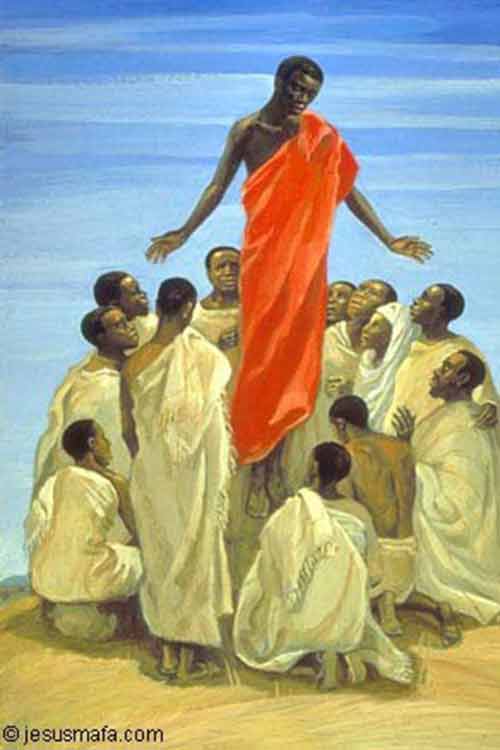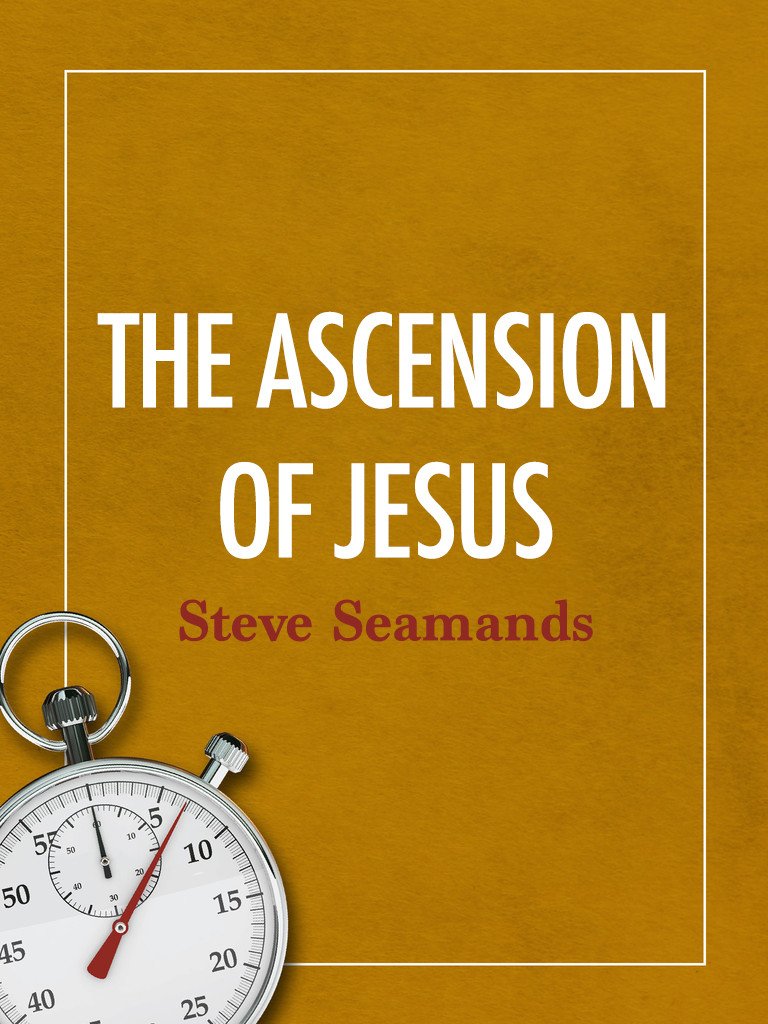

The Gospel of Matthew ends at a mountain in Galilee, with Jesus commanding the disciples to spread the Gospel. Afterwards, the disciples return to Jerusalem rejoicing, remaining continually in the Temple. They say: "Ye men of Galilee, why stand ye gazing up into Heaven? This same Jesus, Who is taken up from you into Heaven, shall so come in like manner as ye have seen Him go into Heaven" (Acts 1:11). Two men clothed in white appear and tell the disciples that Jesus will return in the same manner as he was taken. Some traditions say that he was taken up in a fiery chariot, much like the Prophet Elijah. Jesus is taken up and received by a cloud. Jesus tells his disciples that they will receive the power of the Holy Spirit and that they will spread his message the world over. Olivet (or the Mount of Olives), to the northeast of Bethany. Jesus and the eleven were gathered near Mt.

For forty days after the Resurrection, Jesus continued to preach the Gospel. The third, and most celebrated, account of the Ascension is in the Acts of the Apostles (1:9-12). While in the act of blessing them, Jesus was carried up to heaven. Jesus led the eleven to Bethany, not far from Jerusalem. The Gospel of Luke is even more brief in its description (24:50-51). No description of the Ascension itself is given Mark simply states that it happened. After delivering these final words, Jesus is received into heaven to sit at the right hand of God. Jesus commands his followers to spread the Gospel, and that those who believe will be known by their invulnerability to poison, ability to heal the sick, and the like. Jesus and the remaining eleven disciples are seated at a table, presumably in a room in or near Jerusalem. Let us therefore recite this prayer with the emotion of children who are happy because their mother is happy.The first account of the Ascension found in the Bible is in the Gospel of Mark (16:14-19).

In fact, our joy is a reflection of Mary’s joy, for it is she who guarded and guards with faith the events of Jesus. “In this prayer, expressed by the Alleluia, we turn to Mary inviting her to rejoice, because the One whom she carried in her womb is Risen as He promised, and we entrust ourselves to her intercession. It is composed of four short verses, each ending with an “alleluia.” With the Regina Coeli, the faithful turn to Mary, the Queen of Heaven, to rejoice with her at the Resurrection of Christ.Īt the Regina Coeli on Easter Monday of 2015, Pope Francis spoke about the spiritual dispositions that should animate the faithful as they recite this Marian prayer: This ancient antiphon arose, according to a pious tradition, in the 6th century it is attested in documentary sources from the first half of the 13 th century, when it was inserted in the Franciscan breviary. Like the Angelus, the Regina Coeli is said three times a day, at dawn, at noon, and at dusk, in order to consecrate the day to God and the Virgin Mary. It is recited standing as a sign of Christ’s victory over death. It was Pope Benedict XIV who, in 1742, enjoined the recitation of the Regina Coeli in place of the Angelus during Eastertide, that is, from Easter Sunday to the end of Pentecost. The antiphon Regina Coeli (“Queen of Heaven”) is one of four traditional Marian antiphons, the others being Alma Redemptoris Mater, Ave Regina Coelorum, and Salve Regina.


 0 kommentar(er)
0 kommentar(er)
